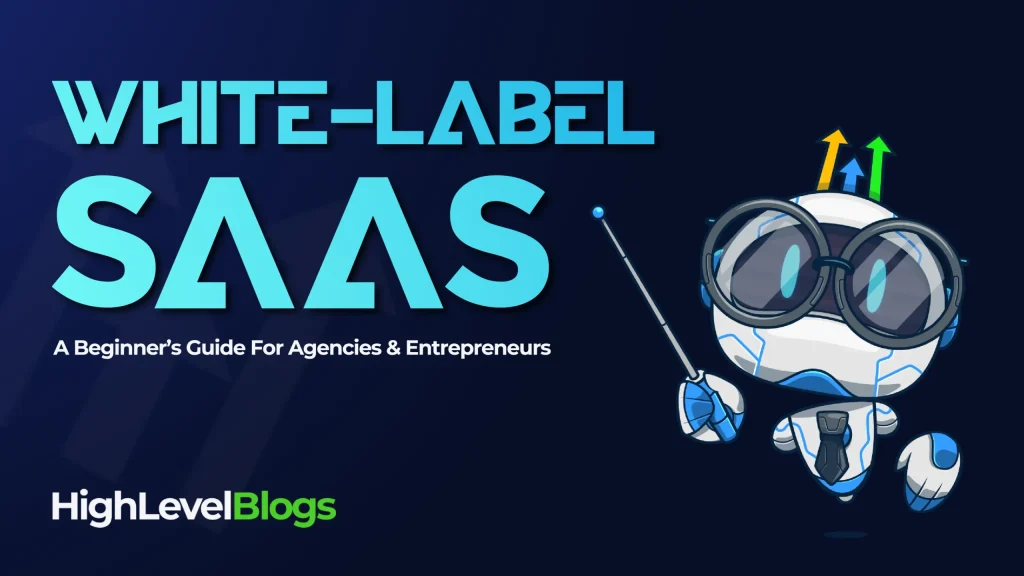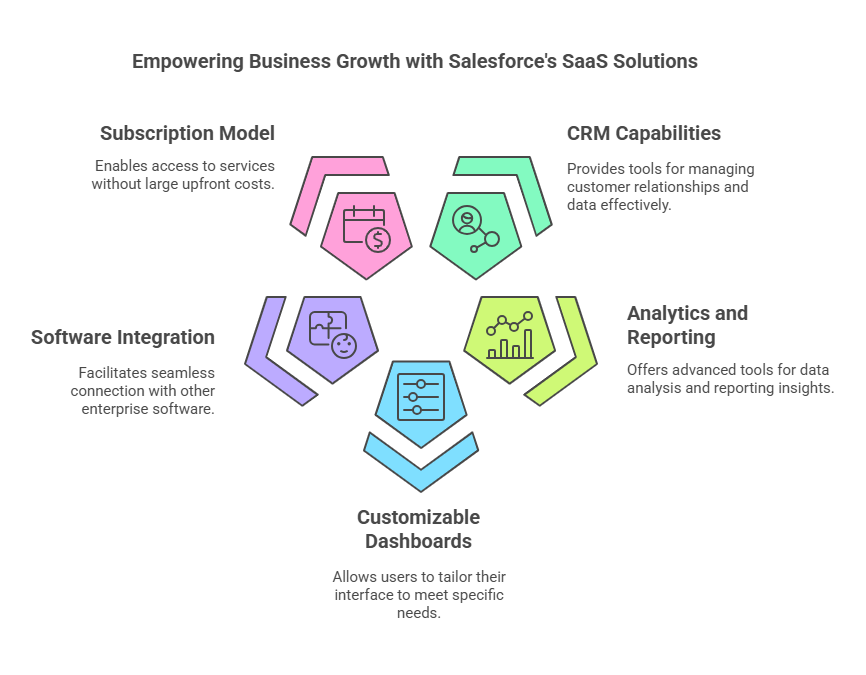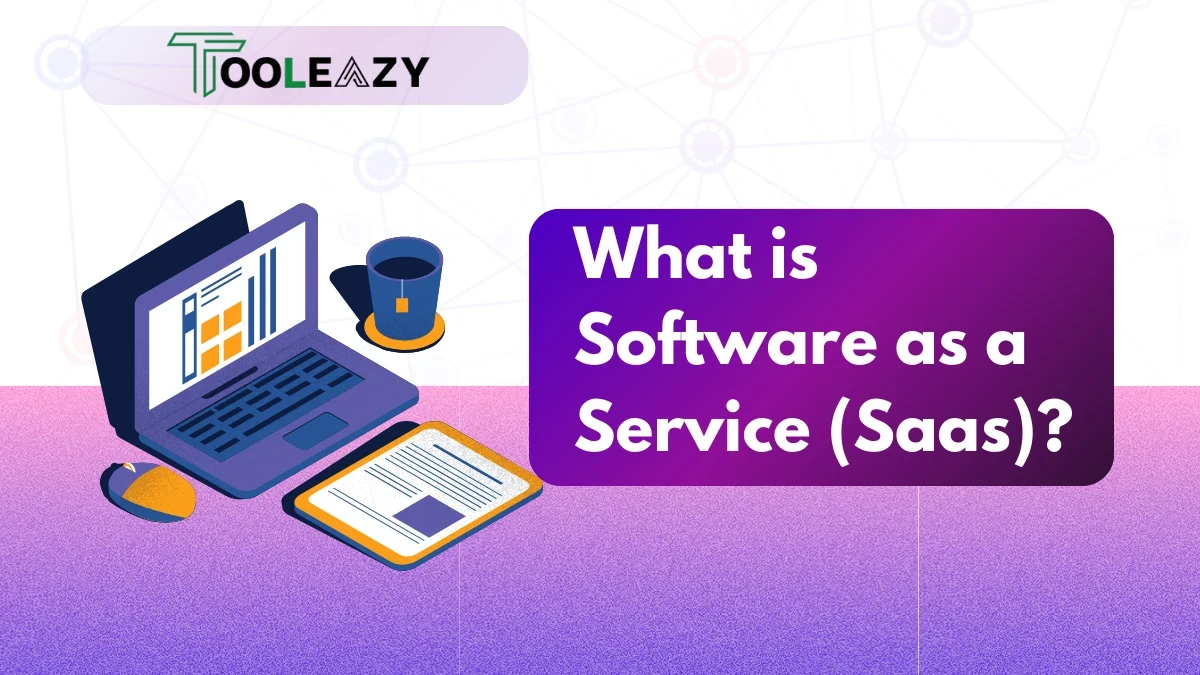Software as a Service (Saas) is a cloud-based method of delivering software. Users access the software online, rather than installing it on their computers.
In today’s digital world, Saas is everywhere. You likely use it daily without realizing it. Think about your email, online storage, or even streaming services – all are examples of SaaS. This guide will help you understand what SaaS is and why it’s so important.
We’ll examine how it works, its benefits, and its role in business and everyday life. By the end, you’ll have a clear picture of SaaS and how it fits into the modern tech landscape. Let’s dive in and explore the world of SaaS together.

Credit: salesblink.io
Table of Contents
ToggleWhat Is Saas?
In today’s digital world, businesses need efficient and cost-effective software solutions. Software as a Service (Saas) is one such solution. It allows companies to use software applications over the Internet. This guide will help beginners understand what SaaS is and how it can benefit them.
Saas stands for Software as a Service. It is a way of delivering applications over the Internet. Instead of installing and maintaining software, you access it online. This approach saves time and money.
Key Features Of Software as a Service (Saas)
- Accessibility: Use SaaS applications from any device with an internet connection.
- Subscription-based: Pay for the software on a subscription basis, often monthly or yearly.
- Automatic Updates: The service provider manages updates and patches.
How Saas Works
With SaaS, the service provider hosts the application and its data on their servers. Users access the software through a web browser. This model is different from traditional software, which requires installation on individual devices.
| Benefit | Explanation |
|---|---|
| Cost-Effective | No need for expensive hardware or software licenses. |
| Scalability | Easy to scale up or down based on business needs. |
| Maintenance-Free | Service providers handle all maintenance and updates. |
Examples Of Popular Saas Applications
- Google Workspace: Offers tools like Gmail, Google Drive, and Google Docs.
- Microsoft 365: Includes applications like Word, Excel, and Outlook.
- Salesforce: A leading customer relationship management (CRM) platform.
Is Saas Right For You?
SaaS can be a good choice for businesses of all sizes. It offers flexibility, cost savings, and ease of use. Consider your business needs and evaluate if SaaS solutions align with your goals.

Credit: blog.gohighlevel.com
Key Features
Software as a Service (Saas) is a cloud computing model. It delivers software applications over the Internet. Users access these applications via a web browser. SaaS is popular due to its many benefits. One of the key advantages is its unique features. These features make it user-friendly and efficient. Let’s explore the key features of SaaS in detail.
Accessibility
SaaS is highly accessible. It allows users to access applications from anywhere. All you need is an internet connection and a web browser. This means you can work remotely. Whether you are at home, in the office, or traveling, you can use SaaS applications.
Accessibility is vital for businesses today. It supports remote work and global teams. Employees can collaborate easily, regardless of their location. SaaS also offers multi-tenancy. This means multiple users can access the same application simultaneously.
Here are some benefits of SaaS accessibility:
- Remote access to business applications
- Support for global teams
- Increased productivity and collaboration
- Easy software deployment without physical installations
Accessibility enhances the user experience. It makes SaaS a user-friendly solution. Users do not need to worry about software installations or updates. Everything is managed on the cloud, ensuring seamless access to the latest features.
Scalability
Scalability is a key feature of SaaS. It means the software can grow with your business. SaaS providers offer flexible subscription models. You can easily upgrade or downgrade your plan based on your needs.
Scalability ensures cost-effectiveness. You pay only for what you use. There is no need for significant upfront investments. This is especially beneficial for small and medium-sized businesses.
Here is a table highlighting the scalability benefits of SaaS:
| Feature | Benefit |
|---|---|
| Flexible Subscription Model | Adjust your plan as your needs change |
| Cost-Effectiveness | Pay only for the resources you use |
| On-Demand Software | Access more resources during peak times |
Scalability also supports business growth. As your business expands, your SaaS applications can handle more users and data. There is no need to invest in new hardware or software. This makes SaaS a practical choice for growing businesses.
Automatic Updates
SaaS provides automatic updates. This ensures you always have access to the latest features and security patches. Automatic updates save time and effort. Users do not need to manually update their software.
Here are some advantages of automatic updates:
- Always up-to-date with the latest features
- Enhanced security with regular patches
- Reduced maintenance effort for IT teams
- Improved performance with the latest enhancements
Automatic updates are part of the SaaS model. They ensure a seamless user experience. Your software is always current and secure. This reduces the risk of vulnerabilities and improves overall performance.
SaaS providers handle all updates on the cloud. This means users experience minimal disruption. Updates are rolled out gradually, ensuring continuous availability of the service.
Benefits Of Saas
Software as a Service (SaaS) is a method of delivering applications over the Internet. Instead of installing and maintaining software, you access it via the cloud. This guide will help you understand what SaaS is and its numerous benefits.
Cost-effective
SaaS is a cost-effective solution for many businesses. Traditional software requires purchasing licenses, hardware, and regular maintenance. With SaaS, costs are minimized. There are no upfront fees for hardware or software. Instead, you pay a subscription model, usually monthly or annually. Whether you’re a small or big business owner or just trying to find ways to make money online Saas is going to help you with your overall productivity.
Here are some key cost-saving benefits of SaaS:
- Lower initial costs: No need to buy expensive hardware or software licenses.
- Predictable expenses: Subscription fees are predictable and help with budgeting.
- No maintenance costs: The provider handles maintenance and updates.
Consider the table below for a quick comparison:
| Traditional Software | SaaS |
|---|---|
| High upfront costs | Low subscription fees |
| Regular maintenance fees | Maintenance included |
| Hardware expenses | No hardware required |
Easy Collaboration
SaaS simplifies easy collaboration among team members. Cloud computing enables users to access software from any location. This makes remote access simple and convenient.
Benefits of SaaS for collaboration include:
- Online collaboration tools: Real-time editing and sharing of documents.
- Data security: Providers offer high-level security measures.
- Scalability: Easily add or remove users as needed.
For instance, using SaaS applications like Google Docs or Microsoft 365, team members can work on the same document simultaneously. This enhances business efficiency and accelerates project completion.
Time-saving
SaaS applications are designed to be time-saving. They often come with a user-friendly interface that requires minimal training. This allows employees to start using the software quickly.
Time-saving features of SaaS include:
- Automatic updates: Software is always up-to-date without manual intervention.
- Quick deployment: No need for lengthy installations or configurations.
- Accessibility: Access software from any device with an internet connection.
These features ensure that businesses can focus on core activities without worrying about IT management. SaaS enhances business efficiency by reducing downtime and improving productivity.

Credit: www.munro.agency
Common Use Cases
Business Applications
Software as a Service (SaaS) has transformed how businesses operate by offering various business software solutions through a subscription model. Companies no longer need to invest in expensive infrastructure or worry about maintenance. With SaaS, everything is managed via cloud computing, making it efficient and cost-effective.
Enterprise applications within SaaS cover a broad spectrum of business needs:
- Accounting and Finance: Tools like QuickBooks and Xero help manage financial records, invoices, and payroll.
- Human Resources: Platforms such as BambooHR and Zenefits streamline employee management, benefits, and recruitment.
- Marketing: Hootsuite and Mailchimp assist in social media management and email marketing campaigns.
These tools provide numerous SaaS benefits including:
- Scalability in SaaS: Easily scale operations up or down based on business needs.
- Flexibility: Access software from anywhere with an internet connection.
- Cost Savings: Reduce the need for costly hardware and IT staff.
By leveraging SaaS for business applications, companies can focus more on growth and less on technical upkeep.
Customer Relationship Management
Customer Relationship Management (CRM) is crucial for maintaining and improving customer interactions. CRM software offered as on-demand software through SaaS enables businesses to manage customer data, track interactions, and automate sales processes.
Popular CRM software includes:
- Salesforce: Provides comprehensive CRM solutions for sales, service, marketing, and more.
- HubSpot: Offers free CRM tools that help manage customer data and track leads.
- Zoho CRM: Features customizable CRM solutions tailored for small to large enterprises.
Key features of CRM SaaS include:
- Customer Data Management: Centralized database for customer information.
- Automated Sales Processes: Streamlines tasks such as follow-ups and scheduling.
- Analytics and Reporting: Provides insights into customer behavior and sales trends.
Businesses benefit from CRM SaaS by improving customer satisfaction, increasing sales efficiency, and making informed decisions based on data analytics.
Project Management
Project management tools available as SaaS simplify the process of planning, executing, and monitoring projects. These tools help teams collaborate effectively, stay on schedule, and meet their goals.
Popular project management tools include:
- Asana: Helps teams organize tasks, set deadlines, and track progress.
- Trello: Uses a card-based system to manage tasks and workflows.
- Monday.com: Offers customizable templates and automation features for project planning.
Key features of SaaS project management tools:
- Task Management: Assign tasks, set priorities, and track progress.
- Collaboration: Share files, communicate in real-time, and work together on projects.
- Time Tracking: Monitor time spent on tasks and projects to ensure efficiency.
By using project management tools in a SaaS model, businesses can enhance productivity, improve team coordination, and ensure projects are completed on time and within budget.
Popular Saas Providers
Software as a Service (SaaS) is a method of delivering applications over the Internet. Instead of installing and maintaining software, you access it via the internet, freeing yourself from complex software and hardware management. Popular SaaS providers are key players in the field, offering a range of solutions for businesses and individuals. Let’s explore some of the most well-known SaaS providers.
Salesforce
Salesforce is a leading name in the SaaS industry. It is known for its robust Customer Relationship Management (CRM) software. Companies of all sizes use Salesforce to manage their customer data, sales processes, and marketing campaigns.
Key features of Salesforce include:
- Comprehensive CRM capabilities
- Advanced analytics and reporting
- Customizable dashboards
- Integration with other enterprise software
Salesforce operates on a subscription model, making it accessible for businesses without the need for large upfront investments. It supports digital transformation by offering cloud-based solutions, which means it is always up-to-date with the latest features and security updates.

| Feature | Description |
|---|---|
| CRM | Manage customer relationships effectively |
| Analytics | Gain insights from data |
| Customization | Tailor the software to your needs |
| Integration | Connect with other tools |
Google Workspace
Google Workspace, formerly known as G Suite, is a collection of productivity software and online collaboration tools. It includes well-known applications like Gmail, Google Drive, Google Docs, and Google Meet. These tools are designed to enhance productivity and collaboration among teams.
Benefits of Google Workspace:
- Seamless integration with other Google services
- Real-time collaboration on documents
- Cloud storage for easy access and sharing
- Scalability for businesses of all sizes
Google Workspace is ideal for businesses looking for a comprehensive suite of tools to support remote work solutions. It operates on a subscription model, providing flexibility and cost-effectiveness. The platform is constantly updated, ensuring users have access to the latest features and security enhancements.
Zoom
Zoom has become synonymous with remote work solutions and online collaboration tools. It offers a reliable platform for video conferencing, webinars, and online meetings. Zoom is popular among businesses, educational institutions, and individuals for its ease of use and robust features.
Why Zoom is popular:
- High-quality video and audio
- Screen sharing capabilities
- Virtual backgrounds and filters
- Breakout rooms for small group discussions
Zoom supports a wide range of devices, making it accessible from anywhere. It operates on a subscription model, with various plans to suit different needs. With the increasing trend towards remote work, Zoom has become an essential tool for maintaining communication and collaboration in a digital workspace.
Challenges Of Saas
Software as a Service (SaaS) is a software distribution model where applications are hosted by a service provider and made available to customers over the Internet. This model offers several benefits such as scalability, cost-effectiveness, and ease of use. However, it comes with its own set of challenges. Understanding these challenges is crucial for businesses planning to adopt SaaS solutions. Let’s delve into some of the key challenges associated with SaaS.
Data Security
Data security is one of the most significant concerns in SaaS. Since SaaS applications are hosted on cloud servers, ensuring data protection is crucial. Here are some key points to consider:
- Data Breaches: Cloud computing environments are often targeted by cybercriminals. Ensuring robust security measures is essential.
- Compliance: Businesses must comply with data protection regulations such as GDPR and HIPAA, which require stringent security practices.
- Data Encryption: Encrypting data both in transit and at rest can safeguard sensitive information.
Ensuring data security involves a combination of technological solutions and best practices. Companies should invest in advanced security technologies like firewalls, intrusion detection systems, and regular security audits. They should also train employees on data security practices to minimize human errors that could lead to security breaches.
Downtime Risks
Downtime can have a significant impact on businesses relying on SaaS applications. Here are some aspects to consider:
| Factor | Impact |
|---|---|
| Service Uptime | Critical for ensuring continuous business operations |
| Maintenance Schedules | Planned downtimes can affect user experience |
| Unexpected Outages | Can lead to a loss of productivity and revenue |
Maintaining high service uptime is crucial for SaaS providers. Businesses should carefully review the Service Level Agreements (SLAs) offered by the SaaS provider. SLAs typically outline the expected uptime and the compensation in case of downtime. Additionally, having a contingency plan can help mitigate the impact of unexpected outages.
Limited Customization
While SaaS solutions offer numerous benefits, they often come with limited customization options. This can be a challenge for businesses with specific needs. Consider the following points:
- Standard Features: SaaS applications usually offer a set of standard features that may not meet all business requirements.
- Customization Options: Limited customization can hinder the ability to tailor the software to specific workflows.
- Vendor Dependency: Businesses may depend on the vendor for custom feature development, which can be time-consuming and costly.
To address these challenges, businesses should assess their needs and evaluate the customization capabilities of the SaaS solution. Engaging with the vendor to discuss possible customizations and understanding the associated costs and timelines can help in making an informed decision. Additionally, some SaaS providers offer APIs that allow businesses to extend the functionality of the software to better suit their needs.
Saas Vs. Traditional Software
Software as a Service (SaaS) is a cloud-based delivery model where software is accessed online via a subscription, rather than bought and installed on individual computers. SaaS vs. Traditional Software comparison often comes up when businesses decide on the best way to manage their applications and services. Understanding the differences can help in making an informed choice.
Deployment
In SaaS, deployment is done over the internet. Users can access the software through a web browser without installing anything on their local devices. This is called Cloud Computing. SaaS applications are centrally hosted, which means updates and maintenance are handled by the service provider. This is known as On-Demand Software.
Traditional software, on the other hand, requires installation on each device. This can be time-consuming and requires significant IT resources. Deployment involves:
- Physical installation from CDs or downloads
- Configuration on each machine
- Ongoing updates and patches
The table below highlights the key differences:
| Aspect | SaaS | Traditional Software |
|---|---|---|
| Deployment | Online, through a browser | Local installation |
| Accessibility | Anywhere with internet | Limited to installed devices |
| Updates | Automatic | Manual |
Cost Structure
SaaS operates on a Subscription Model, where users pay a recurring fee. This fee often includes access to software, updates, and support. It is a predictable expense, which makes budgeting easier. User Management is simplified as businesses can scale their subscriptions up or down based on the number of users.
Traditional software usually involves a one-time purchase. This can be a significant upfront cost. Additionally, businesses may need to pay for updates, support, and hardware. The cost structure includes:
- Initial purchase cost
- Hardware expenses
- Maintenance and support fees
The table below compares the costs:
| Aspect | SaaS | Traditional Software |
|---|---|---|
| Initial Cost | Low | High |
| Ongoing Costs | Predictable | Variable |
| Scalability | Easy | Complex |
Maintenance
Maintenance for SaaS is managed by the service provider. This includes updates, security patches, and backups. Businesses benefit from Service Level Agreements (SLAs) that ensure uptime and performance. There is minimal IT involvement required from the user’s side.
Traditional software requires in-house maintenance. This involves:
- Installing updates and patches
- Managing security and backups
- Dealing with hardware failures
Multi-tenancy in SaaS means multiple users share the same infrastructure, which can reduce costs and simplify maintenance. SaaS Advantages include reduced downtime and immediate access to the latest features. SaaS Challenges may include dependency on internet connectivity and concerns about data security.
Here’s a comparison of maintenance aspects:
| Aspect | SaaS | Traditional Software |
|---|---|---|
| Updates | Provider-managed | In-house |
| Security | Provider-managed | In-house |
| Downtime | Low, due to SLAs | Variable |
Future Of Saas
Introduction paragraph about What is Saas? A Beginner’s Guide. and Future of SaaS…
Trends To Watch
The future of SaaS holds many exciting possibilities. As businesses continue to adopt cloud computing, we can expect significant changes. Here are some key trends to watch:
- AI and Machine Learning Integration: SaaS applications are increasingly leveraging AI and machine learning. These technologies help automate tasks and offer personalized experiences.
- Vertical SaaS: Unlike traditional horizontal SaaS, which serves a broad range of industries, vertical SaaS focuses on niche markets. This trend tailors solutions to specific industry needs.
- Micro-SaaS: Small-scale SaaS solutions target very specific problems. They are often run by small teams or solo entrepreneurs.
- Enhanced Security: As data breaches become more common, SaaS providers are enhancing security measures. This includes better encryption, multi-factor authentication, and compliance with global standards.
These trends show how SaaS is evolving. They indicate a shift towards more specialized and secure software delivery methods.
Emerging Technologies
Emerging technologies are playing a crucial role in shaping the SaaS landscape. Let’s explore some of the most promising advancements:
- Blockchain: Blockchain technology enhances data security and transparency. This is particularly important for SaaS applications dealing with sensitive information.
- Edge Computing: Edge computing brings data processing closer to the source. This reduces latency and improves performance for real-time applications.
- 5G Networks: The deployment of 5G networks boosts internet speed and connectivity. This is vital for SaaS applications that require high bandwidth.
| Technology | Impact on SaaS |
|---|---|
| Blockchain | Enhances security and transparency |
| Edge Computing | Reduces latency and improves performance |
| 5G Networks | Boosts speed and connectivity |
These technologies are paving the way for more efficient and secure SaaS solutions. They help meet the growing demands of modern businesses.
Market Growth
The SaaS market is experiencing rapid growth. Several factors contribute to this expansion:
- Subscription Model: The subscription model offers flexibility. It allows businesses to scale their usage based on needs.
- Cost-Effective Solutions: SaaS eliminates the need for costly hardware and maintenance. This makes it an attractive option for small and medium enterprises.
- Global Adoption: The global adoption of cloud computing drives the SaaS market. More businesses are moving to cloud-based solutions.
According to various reports, the SaaS market is expected to grow significantly in the coming years. The table below provides an overview of the projected market growth:
| Year | Market Size (in billions) |
|---|---|
| 2020 | 157 |
| 2021 | 171 |
| 2022 | 186 |
| 2023 | 200+ |
This growth indicates a strong future for SaaS. Businesses worldwide are recognizing the benefits of on-demand software.
Frequently Asked Questions
What Is Saas?
SaaS stands for Software as a Service. It is a software distribution model. Applications are hosted by a service provider. They are made available to customers over the internet.
How Does Saas Work?
SaaS applications are accessed via the Internet. Users subscribe to the service. The software is hosted on external servers. Maintenance and updates are managed by the provider.
What Are The Benefits Of Saas?
SaaS offers cost savings. It reduces the need for hardware. It provides scalability. Updates are managed automatically. Users can access it from anywhere.
Is Saas Secure?
SaaS providers implement advanced security measures. Data encryption, regular backups, and secure data centers ensure safety. Users should follow best practices to maintain security.
Conclusion
SaaS simplifies software usage for businesses and individuals. It’s cost-effective and scalable. Users access applications via the internet. No need for installations or updates. This model offers flexibility and convenience. Ideal for growing businesses. Security and maintenance are managed by providers.
Lower upfront costs and easy collaboration. SaaS continues to grow in popularity. Explore its benefits for your needs. Make informed decisions about your tech solutions. Understanding SaaS can boost efficiency and productivity. It’s a smart choice for today’s digital world.







3 thoughts on “What is Software as a Service (Saas)? A Beginner’s Guide: Complete Solution”
Thanks for sharing. I read many of your blog posts, cool, your blog is very good.